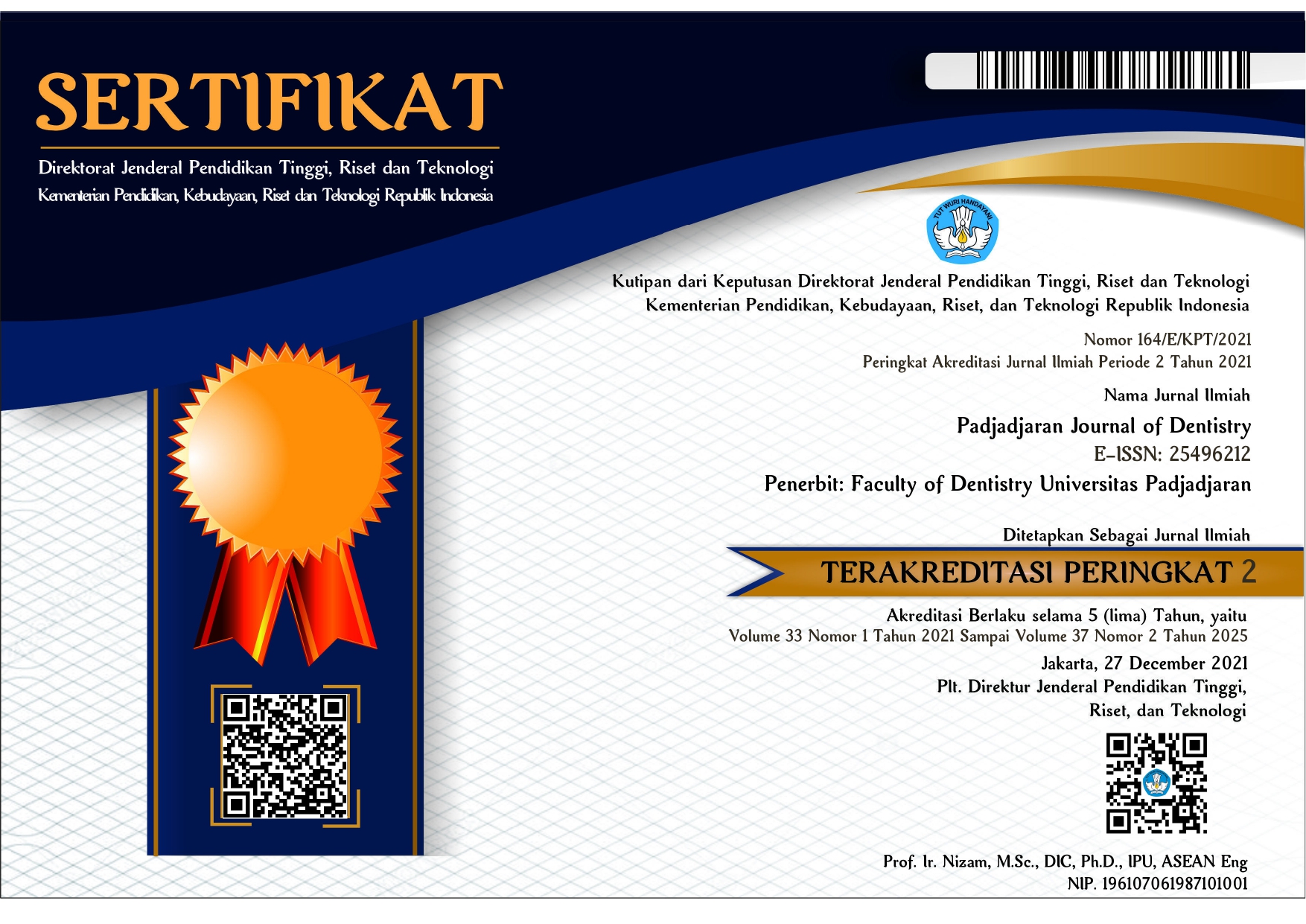A rare case of massif Adenomatoid Odontogenic Tumor in the anterior region of mandible: Mimicking as dentigerous cyst
Abstract
Background. Adenomatoid Odontogenic Tumor (AOT) is a rare tumor of epithelial origin. AOT appears in three clinico-topographic variants: follicular, extrafollicular and peripheral. The AOT was predominantly found in the upper jaw, and rarely found in mandible, especially at anterior mandible. AOT is a tumor of odontogenic epithelium having duct like structures, which may be partly cystic, and in some cases the solid lesion may be present only as masses in the wall of a large cyst. The surgical management of this lesion would be enucleation along with removal of associated impacted tooth. The prognosis for both of them is good and recurrences are very rare after complete removal of the lesion. Purpose. It is important to define final diagnose for AOT due to mimicking with DC in clinically and radiographically finding. Biopsy is still obviously necessary to the final diagnosis. Case. 15-year-old female patients reported with chief complain of swelling in anterior mandible. The swelling beginning 4 years ago, gradually progressed, with no history pain, discharge and patient is complaint about loss of sensation around anterior mandible. Aspiration revealed straw colored fluid thinking in the way of DC. The provisional diagnosis of DC was given due to clinical presentation and radiographic imaging. But the biopsy examination showed AOT due to duct-like epithelial cells was being found. Discussion. The case report illustrates characteristic clinical and radiographic features of follicular variant of AOT mimicking a DC at unusual site that is anterior mandible. AOT is thought to arise from odontogenic epithelium and associated with the impacted tooth. Rightfully AOT is a perfect imitator of DC radiographically as well as histopathologically. It usually clinically misdiagnosed as DC as both have a unilocular, well-defined radiolucency surrounding the crown of an impacted tooth. The mass was enucleated, involved teeth were extracted, and titanium plates are used to avoid pathologist fracture. The patient had uneventful postoperative recovery. Follow up of a year has not shown any evidence of recurrence. Conclusion. Follicular type of OAT could confuse us with DC if the support examination just only clinicaly finding and radiographic examination. This case could not be definitively diagnosed on clinical and radiographic features alone. Biopsy was obviously necessary to the final diagnosis.
Keywords
Full Text:
PDFDigital Object Identifier
DOI : https://doi.org/10.24198/pjd.vol27no3.13561Dimension Citation Metrics Badge
Refbacks
- There are currently no refbacks.
Visitor StatRefbacks
- There are currently no refbacks.

Padjadjaran Journal of Dentistry is licensed under Creative Commons Attribution 4.0 International License





.png)
















